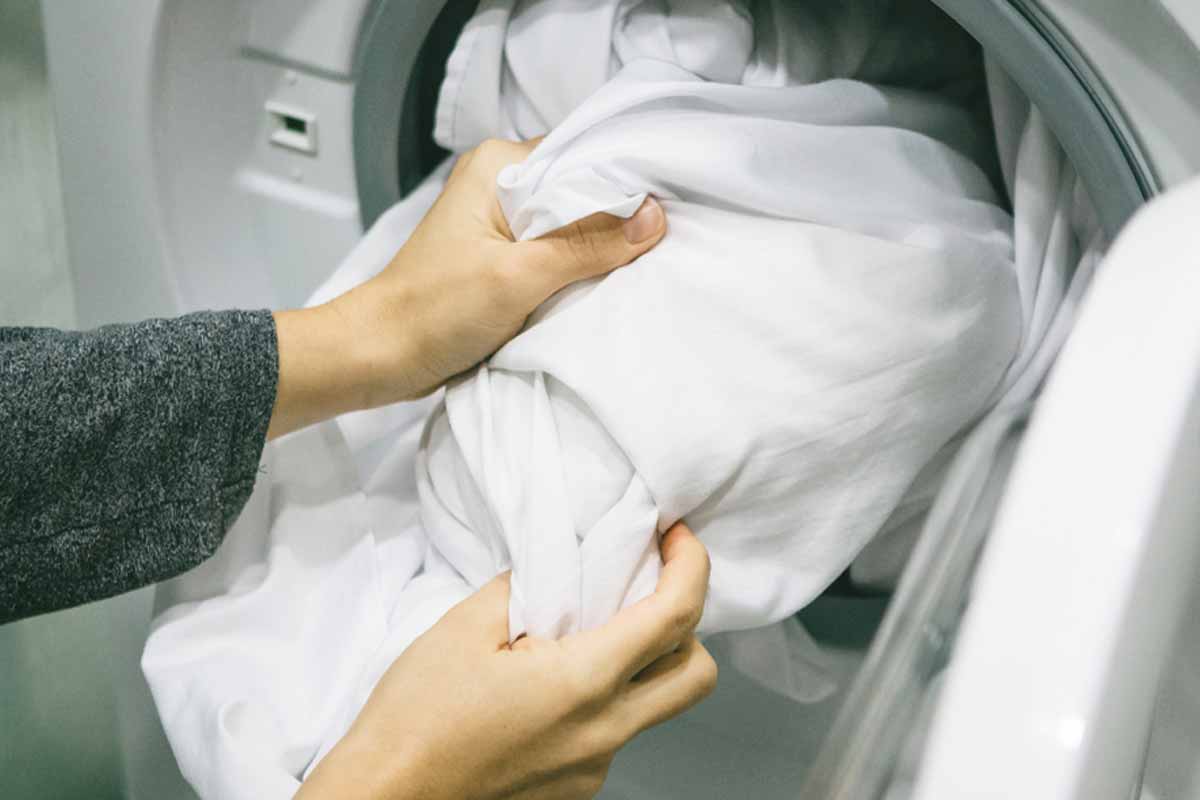If you’re tired of tugging damp knots from your dryer, a laundry pro shares fixes that work.
It’s late, and you just want your bed to be ready. You open the dryer, expecting crisp, warm sheets right away. Instead, you meet sheets balling up in the dryer and a damp, tangled knot. The sigh comes out before you can stop it. You can feel the yawn coming. Light spills from the drum like a stage spotlight. Inside, it’s a nest of corners and twisted hems. You give the bundle a tug and lose patience fast. We’ve all been there, pacing the laundry room in socks. Good news, though : this is fixable, and not with gimmicks. A few smart moves turn chaos into bedding that actually dries.
What causes sheets to ball up in the dryer?
It starts with space, or the lack of it. Stuff the drum with a full set, and tumbling turns into folding. Corners grab corners, and the middle stays wet. Give the sheets a good shake before drying to break that habit. Spread them wide, untwist the edges, and let air find pathways. Run smaller loads for bedding day. Your dryer needs room to move fabric, not a packed tube of linen. These simple steps cut the chance of sheets balling up in the dryer again. Overloading almost guarantees sheets balling up in the dryer, and it steals drying power. Static plays a part on dry days, clinging to fabric tighter than usual.
Check the lint screen before every cycle so air can actually flow. Halfway through, pause and untangle once; it makes the second half easier. Fluff the fitted sheet on its own when you can. Match pillowcases together, not inside the sheets, to avoid stuffed pockets.
Small tweaks that actually work
Still getting damp spots after the shake and the smaller load? Throw in two dryer balls or two tennis balls and let them bounce. They separate layers, keep fabric from hugging itself, and speed evaporation. No gadgets around? A clean towel can play the same role, soaking extra moisture as it tumbles. Dial the heat down and extend the time a touch. Low and slow dries evenly and fights bunching. That friend who swears by wrinkle-release spray isn’t wrong. A light mist relaxes fibers so they glide, not clump. Spritz before you start the cycle.
These tweaks take the drama out of sheets balling up in the dryer without buying a new machine. You’ll notice fewer wrinkles and fewer sheets balling up in dryer moments, which feels like a win. Wool dryer balls are quiet and durable; plastic ones bounce louder. Two or three is enough for a queen set. Tennis balls work in a pinch, though they add a thump. That towel trick shines when the load feels too light. Keep the towel clean and lint-free, or you’ll trade one issue for another. Try medium heat with extra time for a gentler finish. Pull the sheets out right when the cycle ends to dodge creases.
Bigger moves for easier laundry
Sometimes the real issue is your dryer’s size. Queen and king sheets need a drum with breathing room. A compact model can’t keep wide panels moving freely. If an upgrade is possible, look at larger capacity. You’ll get smoother motion, quicker drying, and fewer snarls. If a new appliance isn’t on the table, rethink the fabric itself. Quick-dry sheets are lighter, shed water fast, and don’t cling as much. They spend less time inside, which limits sheets balling up in the dryer and those annoying damp corners.
The end result feels simple: warm, dry bedding that’s ready the minute you are. Slip into bed without the nightly wrestling match, and breathe a little easier. Some laundromats offer oversized machines you can use for bedding days. It’s cheaper than replacing a still-decent dryer at home. Look at fabric blends that dry fast without feeling scratchy. Microfiber dries quickly and resists wrinkles, though cotton feels cooler. Sateen can trap a bit more moisture inside those silky folds. Rotate two sets so one can air-dry partway before the dryer. That split approach trims time and eases wear on fibers. Little changes stack up and make laundry night less of a fight.
